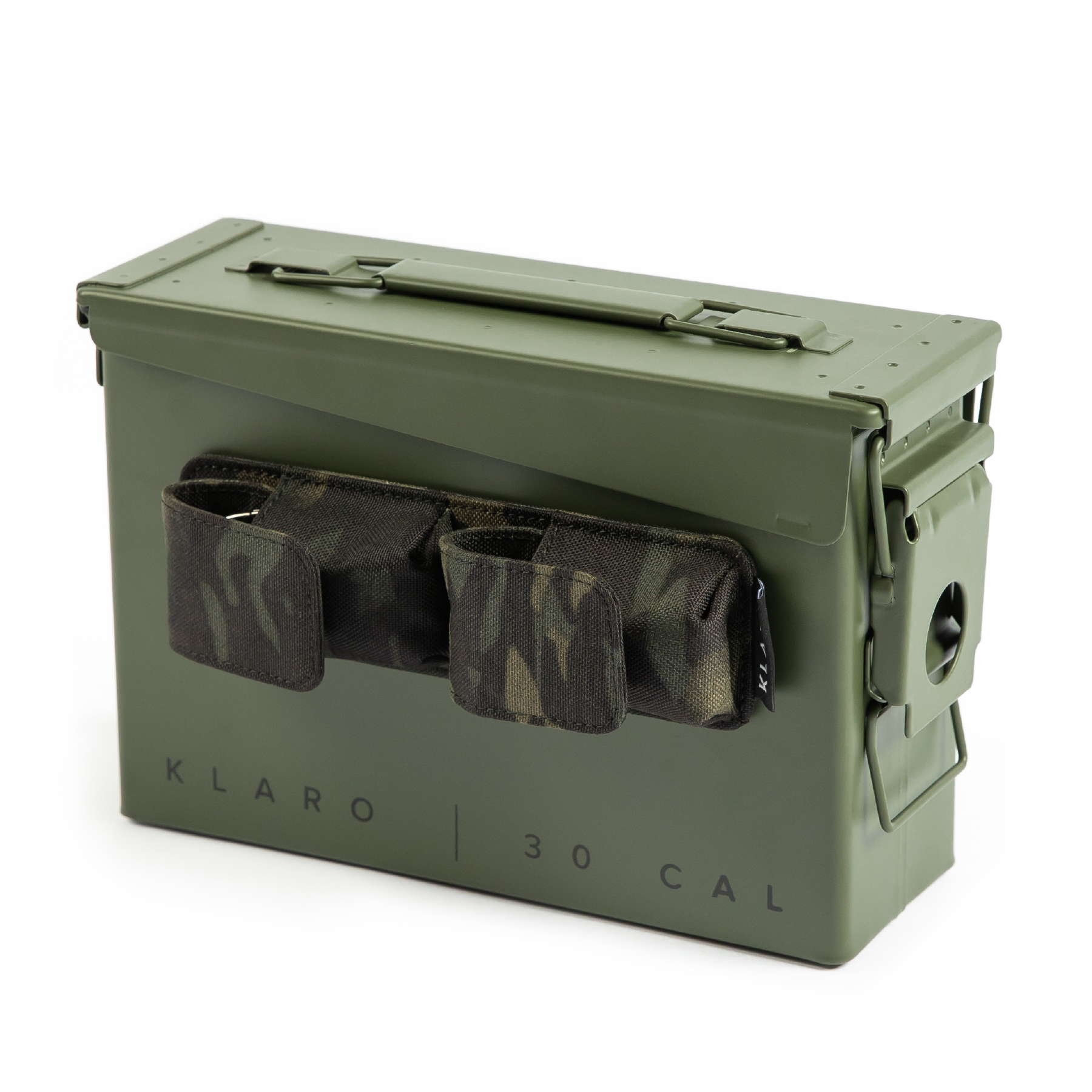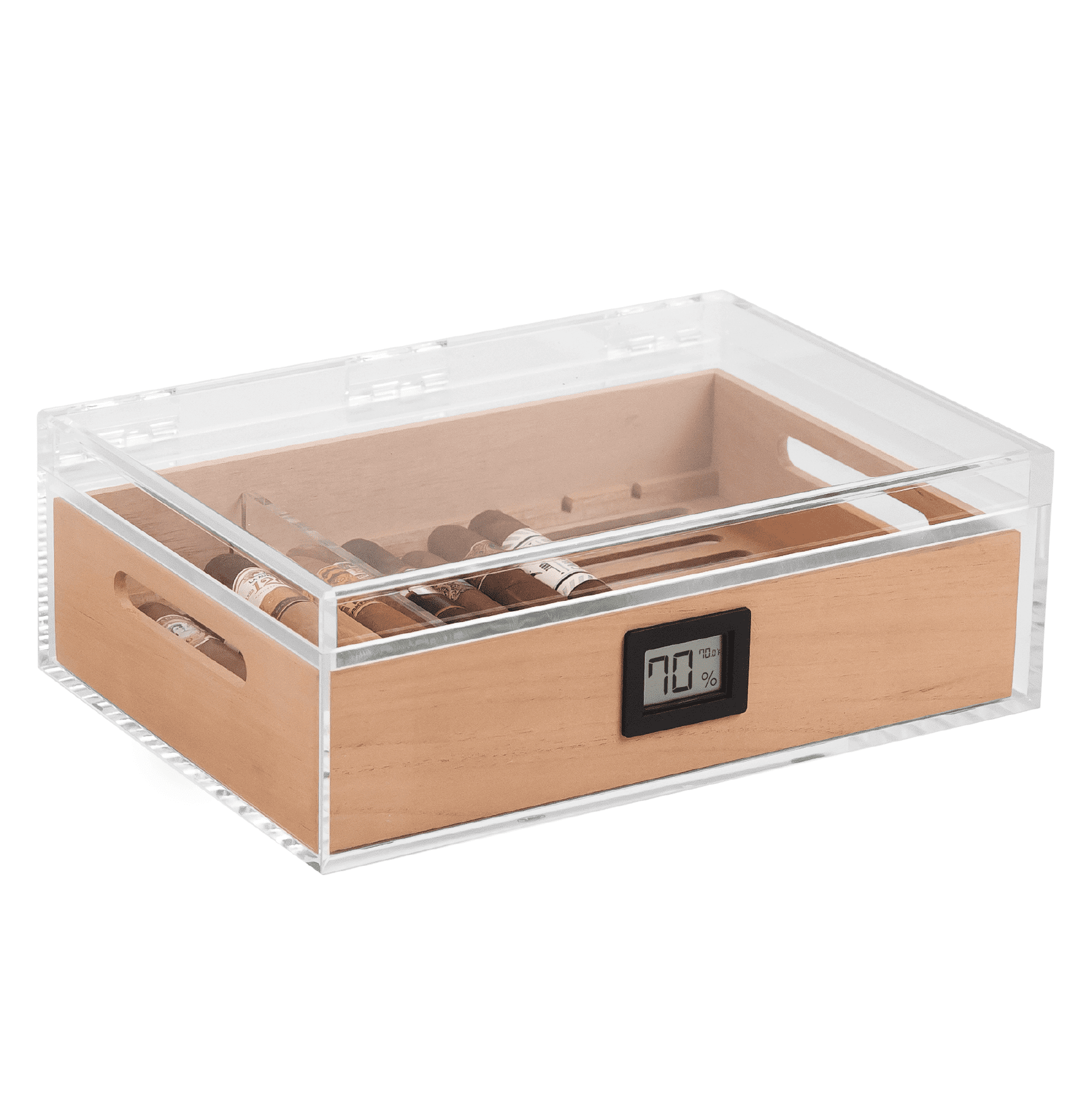- Cigar "freshness" is directly related to its moisture content.
- Dry, stale cigars won't have the same full flavor profile as fresh cigars.
- Inspect your cigars prior to smoking: smell test, pinch test, hygrometer check.
- Try restoring stale cigars with a seasoned, high-humidity humidor.
We all love the good, flavorful experience that comes with smoking a perfectly preserved cigar. But being natural products, cigars still have a shelf-life, no matter how well they’re stored. No one likes a stale smoke, so how can you tell if your cigars are fresh? Here are a few tips, tricks, and suggestions to make sure your cigars stay fresh.
How’s Your Humidor?
The first thing to consider is your humidor. A properly seasoned humidor maintains humidity levels between 65%-72%. This is ideal for most any cigar: not so humid that it promotes mold and bacterial growth, yet not so dry that the tobacco dries out and you lose the full flavor profile of the cigar.
If you’ve got a personal humidor and not the walk-in type that has a full humidification system, then it requires semi-regular humidor seasoning. This process restores the moisture saturation in the wood so it can better respond to additional cigars, frequent openings, or changing climates. If you haven’t reseasoned your humidor in over a year, it’s likely due for a hit of humidity. Otherwise it’s likely to dry out, which means putting your cigars at risk.
The easiest way to maintain the humidor humidity levels is to monitor them with a hygrometer. Some humidors, including our Klaro lineup, include an easily viewable, digital hygrometer for humidors build-in. With others, you can simply place a hygrometer inside with your cigars to get an accurate measurement every time you open it. (Of course, you shouldn’t open it unless you’re putting a cigar in or taking one out. Otherwise you risk losing moisture even faster.)
If you notice your hygrometer has read below 65% for any length of time, there’s a good chance your cigars may not be thriving inside. Keeping your humidor in good shape is easy—and in fact, every one of our Klaro humidors comes with enough supplies to keep your humidor seasoned for a year. (Beyond that, you can sign up for our Klaro Membership to stay well-stocked in all the seasoning necessities.)
Testing Your Cigars
Unless you’re well-versed in stogies, it’s not always easy to tell the difference of a stale cigar from a fresh one at face value. There are other ways you can test your cigars to make sure you’re getting a smoke that you’re going to enjoy the most. Here are a few methods.
Smell Test
Just about every cigar out there has a unique scent—its own defining aroma that makes it so special. And as we know, smell and taste are intimately tied to one another, so the aroma of a good cigar also has a profound effect on the way it tastes when you smoke it.
When you smell a fresh cigar, you should inhale pungent whiffs of earth. That really unique smell that toasted tobacco has. Some common aromas are tobacco (obviously), leather, wood, spices—and some equate the smell to old library books. These are all desirable and mean your cigar is still fresh.
On the flip side, you can usually tell the scent of a stale cigar as well. Old cardboard, mustiness, and dust are all common.
Taste Test
Not necessarily by smoking the thing (though you can do that too), you can often tell if a cigar has gone bad by its taste. When you stick the end of a healthy cigar in your mouth, you can expect flavors of earthiness, some floral or even fruity notes. A stale cigar, on the other hand, will taste bitter and acrid, metallic, or leave you feeling like you’ve put dirt in your mouth.
Pinch Test
Perhaps the best way to tell if your cigar has gone stale is the pinch test. It’s very simple, yet also one of the clearest indicators as to the freshness of your stogie. To perform the pinch test,
squeeze the foot of your cigar between your thumb and forefinger. Be gentle. Move your fingers to the head of the cigar, pinching incrementally along the way.
You’re looking for two things, primarily. First, the cigar should feel firm, but should provide some bounce. Anything overly dry, crackly, or overly firm when you pinch is likely to be a stale cigar.
Second, you’re looking for a consistent texture all the way through the cigar. Even if your cigar leans to the dry side, as long as its consistent throughout, it can probably be revived.
Can I Restore a Stale Cigar?
It’s a shame to see such good cigars go to waste. Fortunately, there are ways to revive dry, stale stogies—in some cases, anyway. Much of it depends on just how far gone the cigar is. The bright side is that a dry cigar can still be smoked. A moldy one—that is, one that’s been over humidified—doesn’t stand much of a chance.
Here are a few things you can try.
First, if your humidor was too dry, you can season it. Slowly get it back to a humidity level that’s a little lower than ideal, then store your cigars in it. Give it a week, and bring the humidity up another two or three points. Then again, until you’re somewhere between 68-72% humidity.
Second, you can store your cigars in a gallon storage bag with a damp (not sopping wet) sponge. The close proximity to the water in the sponge may breathe some life into your cigars. This works similarly to your humidor, but creates a completely airtight environment where the cigars are forced to soak up the extra humidity.
Finally, you can try to wrap your cigars in a damp paper towel. This will give the cigar wrapper no choice but to absorb water, but it’s also one of the most difficult ways to reinvigorate a stale stogie. Reintroducing humidity into cracked tobacco can actually cause the wrapper to crack even more as the filling rehydrates and expands.
Of course, the easiest way to avoid all of this hassle is to make sure you’re regularly seasoning your humidor. It’s a fast and easy process, and a good humidor will help keep your smokes in good shape. Check out our humidor guide to get the scoop on everything you need to know about humidors to learn more.















